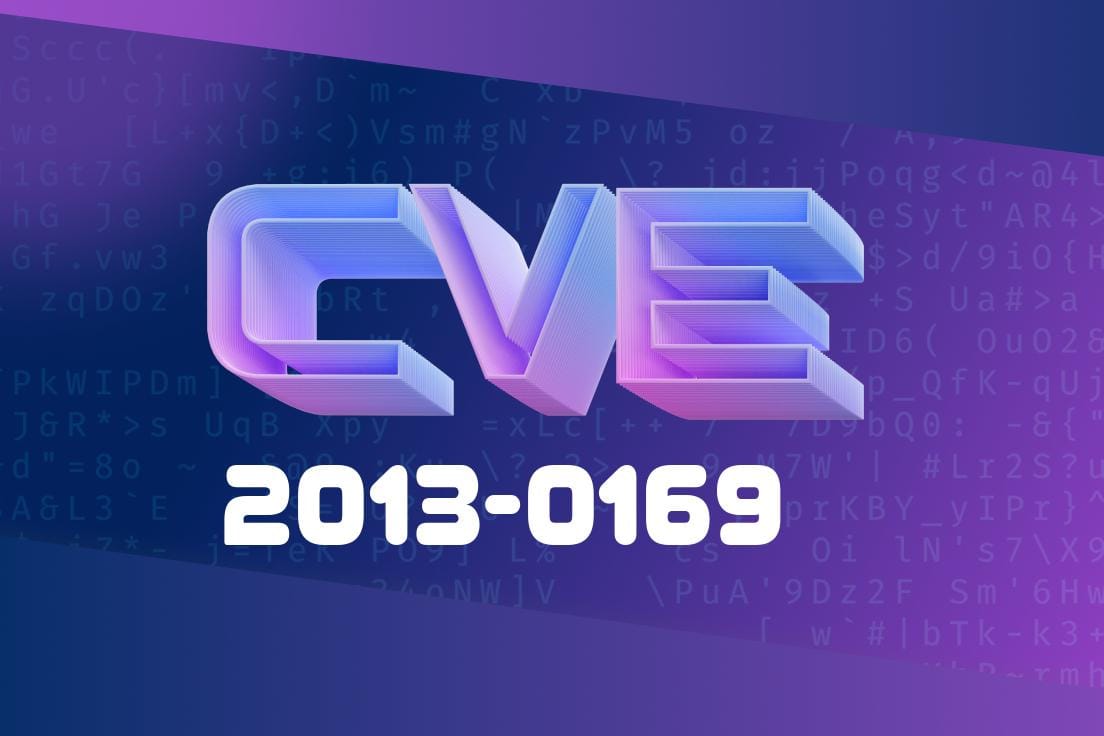CVE-2013-0169, commonly known as the "Lucky Thirteen" attack, is a security vulnerability that affects the encryption protocols TLS 1.1 and 1.2, as well as DTLS 1. and 1.2. These protocols are widely used in various products such as OpenSSL, OpenJDK, PolarSSL, and more. The vulnerability allows remote attackers to perform distinguishing and plaintext-recovery attacks by exploiting timing side-channel attacks on a MAC (Message Authentication Code) check requirement when processing malformed CBC (Cipher Block Chaining) padding.
This post will delve into the details of the CVE-2013-0169 vulnerability, its impact, and how attackers can exploit it. We will also discuss code snippets related to the issue and provide links to the original references for further reading.
Understanding the Vulnerability
The attack targets the TLS protocol's use of CBC-mode encryption, which ensures the confidentiality of data being transmitted over a network. In particular, the protocol is vulnerable to timing side-channel attacks when it processes malformed CBC padding in encrypted packets.
An attacker can exploit this vulnerability by carefully crafting special packets and analyzing the time it takes for a server to process them. The timing data gathered from this process can then be used to perform statistical analysis, allowing the attacker to distinguish encrypted data and recover plaintext.
In OpenSSL, the vulnerability comes from the following part of the "ssl3_get_record()" function
/* Incorrect MAC. */
if (md[EVP_MD_CTX_size(s->read_hash)] != s->s3->tmp.record_md[EVP_MD_CTX_size(s->read_hash)]))
{
/* SSLerror(s, SSL_R_DECRYPTION_FAILED_OR_BAD_RECORD_MAC); */
al = SSL_AD_BAD_RECORD_MAC;
SSLerr(SSL_F_SSL3_GET_RECORD,SSL_R_DECRYPTION_FAILED_OR_BAD_RECORD_MAC);
goto f_err;
}
The time it takes for the "ssl3_get_record()" function to return varies depending on whether the MAC check passed or failed, and this timing difference can be used by an attacker to gain information about the encrypted data.
Exploit Details
The Lucky Thirteen attack allows an attacker to recover plaintext data by exploiting the timing side-channel vulnerability. This is done by sending a large number of carefully crafted packets, each containing slightly different malformed CBC padding. By analyzing the time it takes for the server to process these packets, the attacker can deduce certain information about the plaintext data being encrypted.
This attack requires a high level of understanding of the TLS protocol, encryption algorithms, and statistical analysis. It is considered a sophisticated attack, but any attacker with the necessary knowledge could potentially exploit this vulnerability.
Original References
1. The original research paper by Nadhem J. AlFardan and Kenneth G. Paterson explaining the Lucky Thirteen attack:
Lucky Thirteen: Breaking the TLS and DTLS Record Protocols
The official CVE-2013-0169 entry providing a brief description of the vulnerability
The OpenSSL Security Advisory related to the Lucky Thirteen attack
OpenSSL Advisory 2013-02-05
In conclusion, CVE-2013-0169 is a vulnerability that affects the popular TLS and DTLS encryption protocols. Exploiting this vulnerability requires in-depth knowledge and skills, but the impact can be significant and lead to the recovery of plaintext data from encrypted communications. By understanding this vulnerability and applying the appropriate patches and mitigations, organizations can protect their encrypted communications against the Lucky Thirteen attack.
Timeline
Published on: 02/08/2013 19:00:00 UTC
Last modified on: 07/09/2019 12:06:03 UTC
